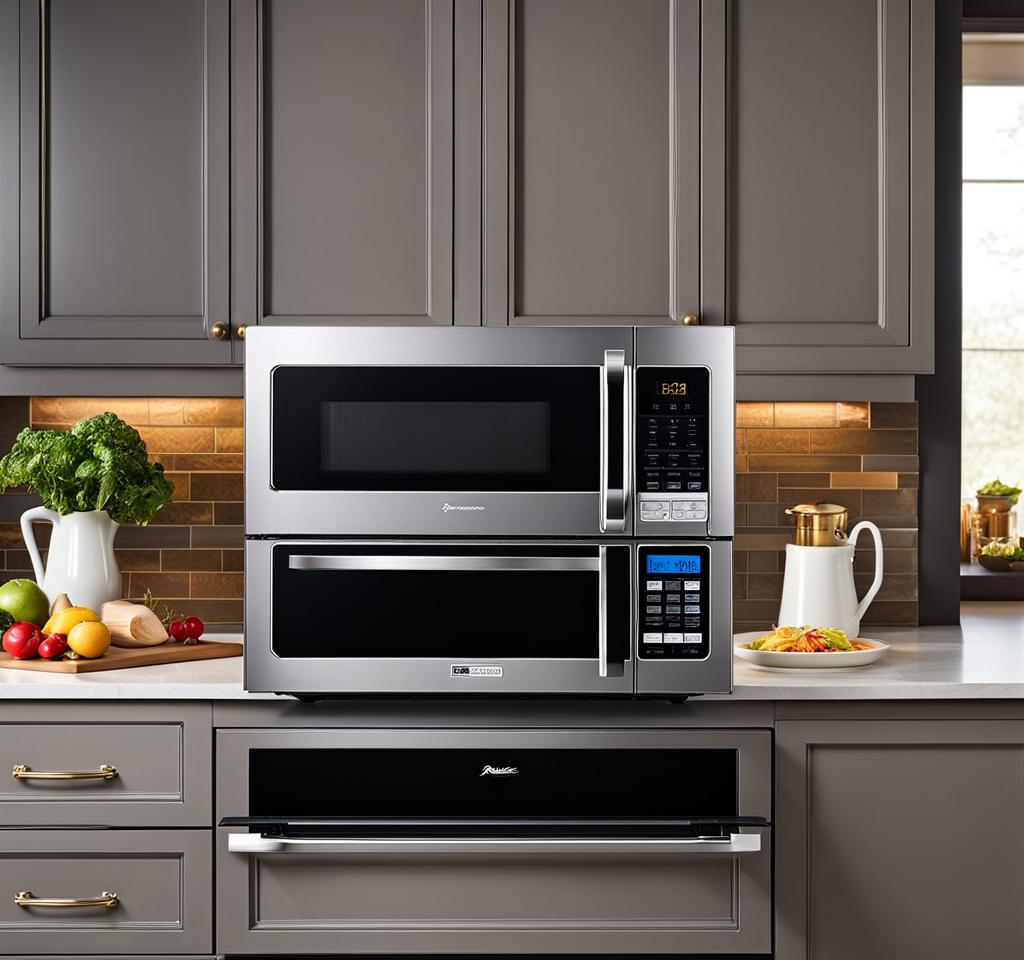Choosing the right microwave size is crucial for efficient cooking and a clutter-free kitchen. The question “what size microwave do i need” echoes through many households, as this humble appliance has become an indispensable part of modern life. Whether you’re a busy professional seeking quick meals or a culinary enthusiast exploring versatile cooking techniques, finding the perfect microwave dimensions can elevate your kitchen experience.
Factors Influencing Microwave Size Selection
When it comes to selecting the ideal microwave size, several factors come into play. First and foremost, consider the dimensions of your kitchen space and its layout. A compact microwave might be the way to go if you have limited counter or cabinet space, while larger kitchens can accommodate more generous sizes. Additionally, the size of your family and your cooking needs play a significant role. A solo dweller or a couple may require a smaller microwave, while larger families might benefit from a more spacious model to accommodate bigger portions or multiple dishes simultaneously.
The frequency of microwave usage is another crucial consideration. If you find yourself relying heavily on this appliance for daily meals, reheating leftovers, or defrosting ingredients, a larger capacity microwave could streamline your routine. Conversely, if you primarily use it for occasional tasks like melting butter or heating up a quick snack, a smaller size might suffice.
Lastly, the types of food you typically cook or reheat in the microwave can influence your size choice. If you often heat up large dishes, bulky containers, or irregularly shaped items, a more generous interior will be your best bet.

Microwave Size Categories Explained
Microwaves come in various sizes, each catering to different needs. Compact models, ranging from 0.5 to 0.9 cubic feet, are ideal for small spaces like dorm rooms, offices, or compact kitchens. They’re perfect for reheating single-serving meals or simple tasks like melting chocolate or softening butter. Midsize microwaves, with capacities between 1.0 and 1.5 cubic feet, strike a balance between space efficiency and versatility, making them a popular choice for most households.
Full-size microwaves, ranging from 1.6 to 2.2 cubic feet, offer ample interior space for cooking or reheating larger portions, accommodating multiple dishes, or even handling family-sized meals. These models are well-suited for households with varying culinary needs or those who frequently entertain guests.
Over-the-range microwaves, which are installed above the stove, serve dual purposes: providing microwave functionality and acting as a built-in ventilation system. Their sizes can vary, but they typically fall within the midsize to full-size range, making them a practical solution for maximizing counter space while ensuring efficient cooking and ventilation.
Capacity and Interior Dimensions
When considering microwave size, it’s essential to understand the correlation between capacity and interior dimensions. The capacity, measured in cubic feet, gives you an idea of the overall volume, but the interior dimensions determine what can fit inside comfortably. A larger capacity doesn’t necessarily translate to more usable space if the interior height or width is limited.
Understanding Turntable Dimensions
The turntable is a crucial component that facilitates even cooking by rotating the food. Pay close attention to the turntable diameter, as it directly impacts the size of dishes or containers you can accommodate. A smaller turntable might pose challenges when heating larger plates or casserole dishes, while a larger one offers more flexibility.
Additionally, consider the clearance between the turntable and the microwave’s interior walls. Sufficient clearance ensures that taller dishes or containers can rotate freely without obstructions, preventing potential spills or uneven heating.
Installation Options and Considerations
The installation method you choose for your microwave can also influence the size you select. Countertop microwaves offer flexibility and portability, but they require ample counter space and proper clearances around the appliance for ventilation and accessibility. Be sure to measure the available counter depth and height to ensure a comfortable fit.
Built-in or integrated microwaves are designed to seamlessly blend into your cabinetry, offering a sleek, streamlined look. However, these models have specific size requirements based on the cabinet dimensions, so precise measurements are crucial to ensure a perfect fit.
Over-the-range microwaves, as mentioned earlier, are a space-saving solution that combines microwave functionality with a built-in ventilation system. However, these models require specific installation requirements, such as proper clearances above the cooktop and adequate cabinet depth to accommodate the microwave’s depth.
Regardless of the installation method, consider accessibility and ventilation needs. Ensure that the microwave’s placement doesn’t compromise your ability to open it comfortably or impede proper airflow for safe and efficient operation.
When choosing a microwave size, it’s essential to balance size with other desired features based on your cooking needs. If you frequently cook larger portions or heat up multiple dishes simultaneously, prioritizing capacity over power output might be the way to go. However, if you primarily use the microwave for quick reheating or defrosting tasks, a smaller size with higher wattage might better suit your needs.
Sensor cooking and auto-defrost capabilities can be invaluable time-savers, especially for busy households. These features automatically adjust cooking times and power levels based on the type and quantity of food, ensuring optimal results without the guesswork.
Interior lighting and visibility are often overlooked factors but can significantly enhance the overall user experience. A well-lit interior and a clear view window allow you to monitor the cooking process easily, preventing over- or undercooking.
Finally, consider additional functions that align with your culinary preferences. Convection microwaves offer baking and roasting capabilities, while grill microwaves add a grilling element, expanding your cooking options within a single appliance.
By carefully evaluating your needs, lifestyle, and kitchen layout, you can select the perfect microwave size that harmoniously integrates into your space while delivering optimal performance and convenience.

This is where you’ll find inspiration to create a stylish and beautiful dream home.